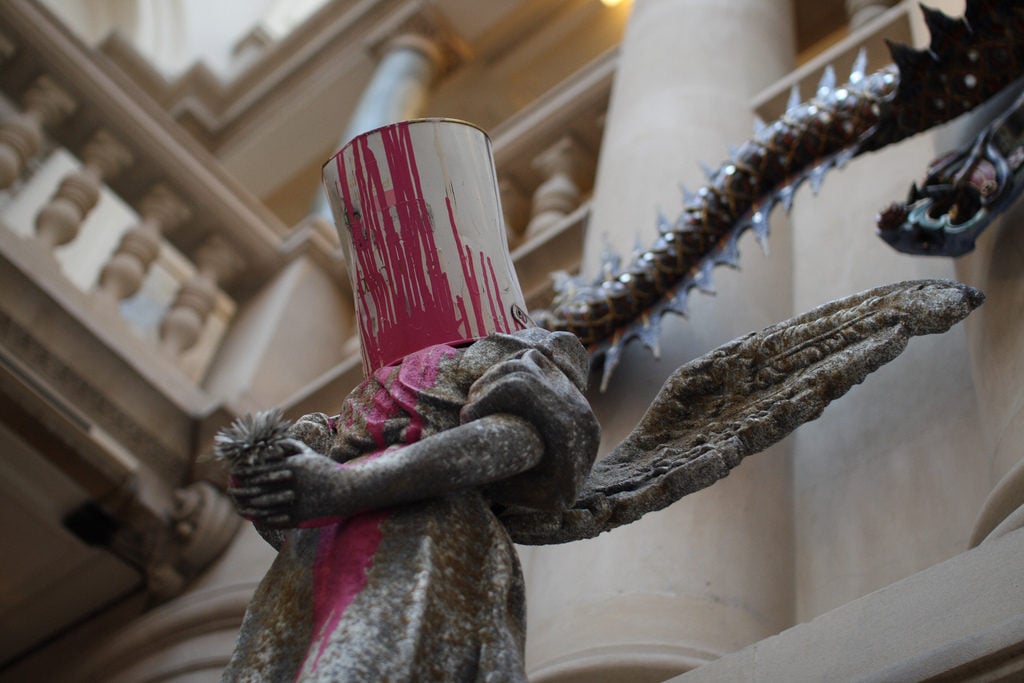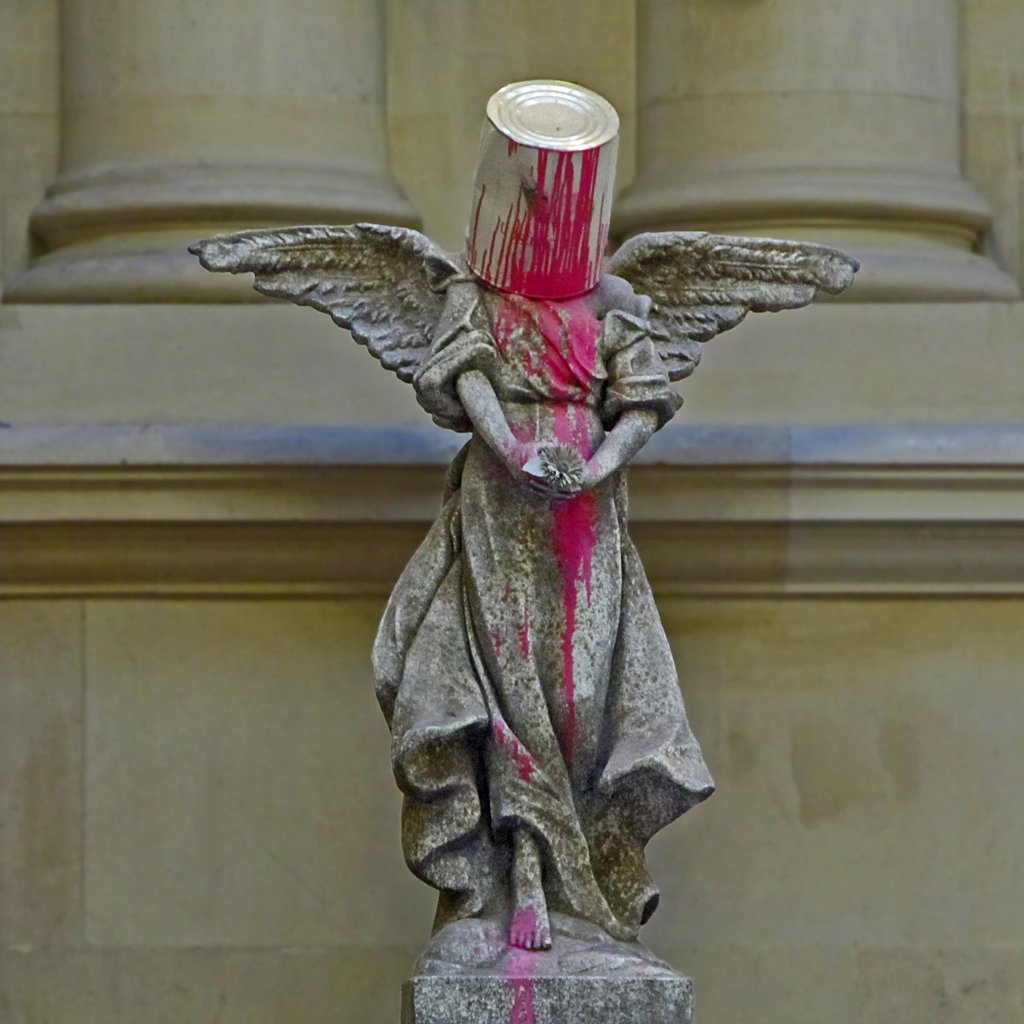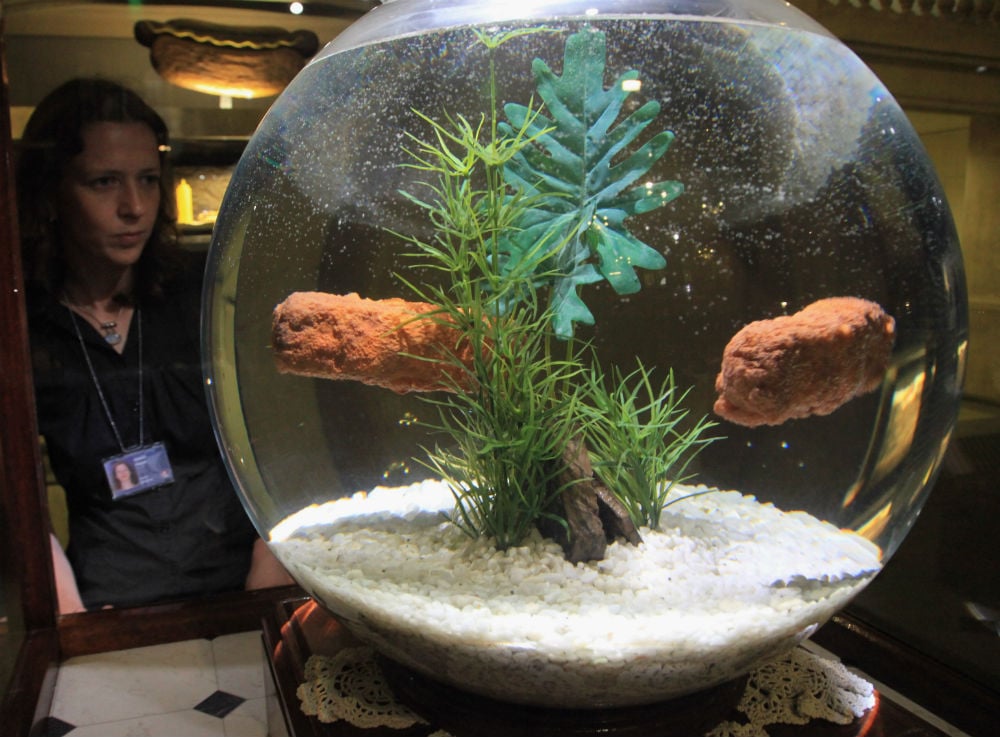Art World
Banksy Busts His Hometown Museum for Scamming His Fans With Hundreds of Unauthorized Prints
The museum has promised to refund all the buyers who snapped up the print for just £5.

The museum has promised to refund all the buyers who snapped up the print for just £5.

Brian Boucher

A print of a work by Banksy was selling for just £5 (about $7) to huge numbers of eager buyers at the online store of England’s Bristol Museum and Art Gallery—up until this week. The machinery ground to a halt when the famed street artist told a buyer, in response to an inquiry, that the museum never had permission to sell the image. The prints had been selling at a rate of up to one per minute.
The print reproduced the work Angel Bust (2009), which was part of a top-secret takeover of the institution, “Banksy Versus Bristol Museum,” in the wildly popular street artist’s hometown back in 2009. The work became referred to as the “paint-pot angel,” as Banksy had upended a pot of pink paint on the sculpture and left it covering the angel’s head.
There was “a massive surge in demand” for the works from the museum’s website after some Banksy fans posted images of the print online, an unnamed museum representative told the BBC. At the time of that article, more than 1,000 orders had come in over the previous 24 hours, he said.

Banksy’s Angel Bust (2009), at the Bristol Museum and Art Gallery. Photo Andrew Gustar, via Flickr.
“This was a mistake on our part,” a spokesperson of the Bristol City Council, which runs the museum, told artnet News via email. “We own the art work in question and had been granted permission to produce the image in our Guide to the Art Gallery published last Autumn. It was assumed that this would allow us to produce prints, however having contacted Banksy’s management we were told that this was not the case.” The museum has promised to refund all the buyers. The spokesman did not immediately respond to an inquiry about how many prints the museum had sold.
The trouble started when buyer Steve Hall, from North Carolina, emailed Banksy to confirm that the prints were authorized, according to the BBC. Hall was dismayed when the artist’s representative replied, “Absolutely not, they were printed without our permission.” The anonymous artist’s studio did not immediately reply to a request for further comment.

A woman looks at one of the surprise exhibits by Banksy on June 12, 2009, as part of “Banksy versus Bristol Museum.” Photo by Matt Cardy/Getty Image.
The work remained with the museum after the Banksy takeover, which included some 100 works. It took place overnight and was known ahead of time to only a few museum staff. It transformed the institution, per the museum’s website, “into a menagerie of Unnatural History—fishfingers swimming in a gold-fish bowl, hot-dogs and chicken nuggets.” Banksy installed a burned-out ice cream truck in the museum’s entrance and moved works around from their usual places; the spectacle led to lines around the block, with some waiting for up to seven hours.
“This is the first show I’ve ever done where taxpayers’ money is being used to hang my pictures up rather than scrape them off,” the street artist told the BBC at the time.